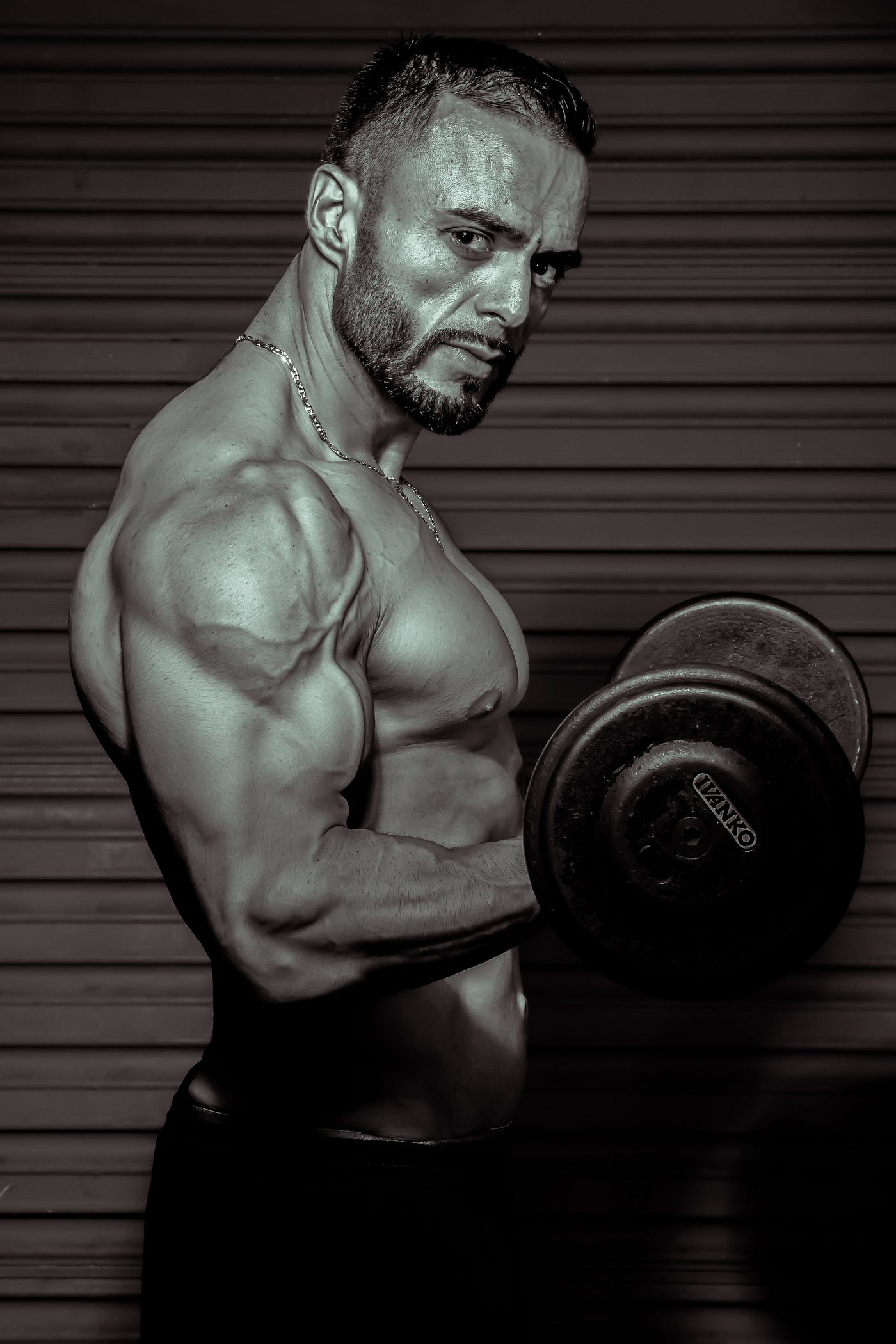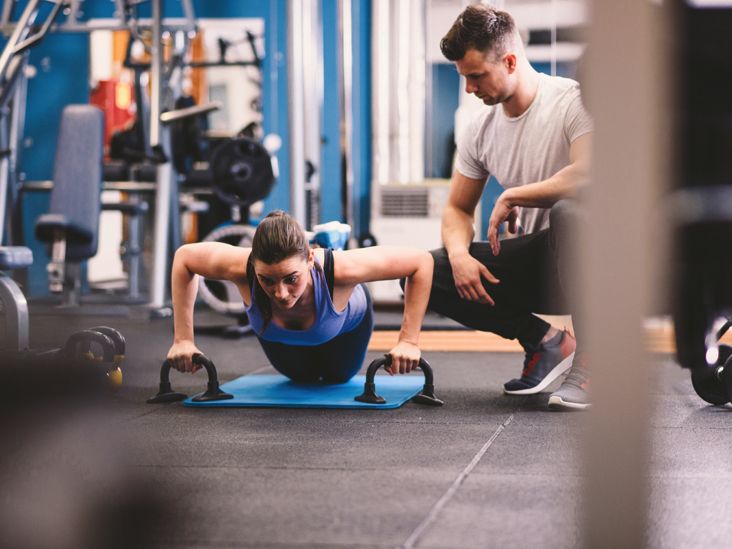As an Amazon Associate, I earn from qualifying purchases.
Your muscles can continue to grow for up to 48 hours after a workout. The muscle-building process, known as muscle protein synthesis, can last anywhere from one to two days following exercise.
When you engage in physical activity, your muscles undergo trauma, leading to microscopic tears in the muscle tissues. During the rest period, typically lasting 24 to 48 hours, the muscles start to repair and grow stronger. This repair phase is crucial for muscle development, as the muscles heal and grow during this time, allowing you to perform the same workout with less effort in the future.
Understanding the timeline for muscle growth after a workout can help you optimize your training schedule and maximize your gains.

Credit: medium.com
The Mystery Of Muscle Growth
Unlocking the mystery of muscle growth post-workout reveals that muscles can continue growing for up to 48 hours. During this time, muscle cells repair and strengthen, aiding in muscle development. Understanding this process is key to optimizing gains and progress in your fitness journey.
Building muscle is a complex process that involves a variety of factors, including exercise, nutrition, and rest. While most people understand that working out is an essential component of muscle growth, the exact timeline for how long muscles continue to grow after a workout remains somewhat of a mystery. In this post, we’ll explore the science behind muscle growth and discuss the role of workouts in building muscle.The Role Of Workouts
When it comes to building muscle, workouts play a crucial role. Specifically, resistance training has been shown to stimulate muscle growth by causing microscopic tears in the muscle fibers. When these fibers heal, they become stronger and larger, leading to an overall increase in muscle mass. But how long do muscles continue to grow after a workout? The answer is not entirely clear. Some research suggests that muscle protein synthesis, the process by which new muscle tissue is formed, can occur for up to 48 hours after a workout. However, the exact timeline for muscle growth may vary depending on factors such as workout intensity, frequency, and individual genetics.Immediate Changes Vs. Long-term Gains
It’s important to note that while some muscle growth may occur immediately after a workout, the majority of long-term gains take time to develop. In fact, muscle growth is a gradual process that can take weeks, months, or even years to achieve significant results. To optimize muscle growth, it’s essential to focus not only on the workout itself but also on proper nutrition and recovery. Adequate protein intake is critical for building muscle, as protein provides the essential amino acids necessary for muscle protein synthesis. Additionally, getting enough rest and recovery time is crucial for allowing the muscles to heal and grow. In conclusion, while the exact timeline for how long muscles continue to grow after a workout remains somewhat of a mystery, it’s clear that workouts play a crucial role in muscle growth. By engaging in regular resistance training, focusing on proper nutrition, and allowing for adequate rest and recovery, individuals can optimize their muscle growth potential and achieve their fitness goals.
Credit: www.healthline.com
The Science Behind Muscle Development
When it comes to building muscle, the science behind muscle development is a fascinating process. Understanding how our muscles grow and repair after a workout can help us optimize our training and achieve better results.
Muscle Trauma And Repair
Muscle growth occurs during the repair process following a workout. When you engage in resistance training, such as weightlifting, you create microscopic tears in your muscle fibers. This muscle trauma triggers a series of biological responses that ultimately lead to muscle repair and growth.
Anabolic Window: Fact Or Fiction?
The concept of the “anabolic window” refers to the limited time after a workout when your muscles are primed for optimal growth. Some sources suggest that consuming protein and carbohydrates within a specific timeframe post-workout can maximize muscle gains. However, recent research indicates that the anabolic window may not be as narrow as previously believed, and the overall nutrient intake throughout the day is more crucial for muscle growth.
Timeframe For Muscle Growth
One of the most common questions among fitness enthusiasts is how long it takes for muscles to grow after a workout. While there is no one-size-fits-all answer, understanding the general timeframe for muscle growth can help you set realistic expectations and stay motivated on your fitness journey. In this article, we will explore the first signs of progress and when to expect visible changes in your muscles.
First Signs Of Progress
After a challenging workout, you might be eager to see immediate results. While it’s important to remember that muscle growth is a gradual process, there are some early signs that indicate your efforts are paying off. Within the first few weeks of consistent training, you may experience:
- Increased strength: You might notice that you can lift heavier weights or perform more repetitions than when you started.
- Improved endurance: Your ability to sustain intense exercise for longer periods may improve, indicating that your muscles are becoming more efficient.
- Enhanced muscle pump: After a workout, you may notice temporary swelling in your muscles, giving them a fuller appearance. This is due to increased blood flow and nutrient delivery to the muscles.
While these initial signs of progress are encouraging, it’s important to remember that they are just the beginning of your muscle growth journey.
When To Expect Visible Changes
Visible changes in muscle size and definition usually take longer to manifest. The timeframe for noticeable muscle growth varies depending on several factors, including:
| Factor | Timeframe |
|---|---|
| Training experience | Beginners may see visible changes within 2-3 months, while experienced lifters may take longer. |
| Diet and nutrition | A well-balanced diet with sufficient protein intake can accelerate muscle growth. |
| Genetics | Individual variations in muscle-building potential can influence the timeframe for visible changes. |
| Consistency | Regular and consistent training is crucial for long-term muscle growth. |
It’s important to note that everyone’s body is unique, and the rate of muscle growth can vary. Patience and consistency are key when it comes to achieving your desired muscle size and definition.
In conclusion, while the first signs of progress can be seen within a few weeks of starting a workout routine, visible changes in muscle size and definition may take several months to become noticeable. By staying committed to your training and maintaining a healthy diet, you can maximize your muscle growth potential and achieve your fitness goals.

Credit: www.healthline.com
Factors Influencing Muscle Growth
Muscle growth after a workout depends on various factors, including genetics, age, diet, and exercise regimen. While muscles can continue to grow for up to 48 hours after a workout, significant gains may take several weeks or even months of consistent effort.
Proper rest and nutrition are also crucial for muscle recovery and growth.
When it comes to muscle growth, there are several factors that can influence how long your muscles continue to grow after a workout. Understanding these factors can help you optimize your training and nutrition to achieve the best results.
Genetics And Individual Differences
Genetics play a significant role in determining how quickly and effectively your muscles grow. Some individuals are genetically predisposed to have a higher potential for muscle growth, while others may struggle to see significant gains despite their efforts. However, it’s important to remember that genetics are not the sole determining factor, and with the right training and nutrition, anyone can make progress.
Additionally, individual differences such as age, gender, and hormone levels can also impact muscle growth. Younger individuals tend to experience faster muscle growth due to their higher levels of growth hormone and testosterone. Similarly, males generally have a greater potential for muscle growth compared to females, primarily due to differences in hormone levels.
Impact Of Diet And Nutrition
Your diet and nutrition play a crucial role in supporting muscle growth. Without proper fuel and nutrients, your muscles won’t have the necessary building blocks to grow and repair. Here are some key considerations:
- Caloric Surplus: To build muscle, you need to consume more calories than you burn. This provides your body with the energy it needs to support muscle growth.
- Protein Intake: Protein is essential for muscle repair and growth. Aim to consume an adequate amount of protein with each meal to support muscle protein synthesis.
- Carbohydrates and Fats: While protein is important, don’t neglect carbohydrates and healthy fats. Carbs provide energy for intense workouts, while fats support hormone production and overall health.
- Meal Timing: Timing your meals strategically can enhance muscle growth. Consuming protein-rich meals before and after workouts can optimize muscle protein synthesis and recovery.
By paying attention to these dietary factors, you can provide your muscles with the necessary nutrients to continue growing and recovering after a workout.
In conclusion, factors such as genetics, individual differences, and diet/nutrition all play a role in determining how long your muscles continue to grow after a workout. By understanding and optimizing these factors, you can maximize your muscle growth potential and achieve your fitness goals.
Optimizing Your Workout Routine
After a workout, your muscles continue to grow and repair for up to 48 hours. During this time, muscle cells undergo trauma and then rebuild stronger and bigger. To maximize muscle growth, it is important to work on different muscle groups and maintain a consistent workout schedule.
Balancing Intensity And Recovery
To optimize your workout routine and promote muscle growth, it’s essential to find the right balance between intensity and recovery. While pushing yourself during a workout is important, giving your muscles enough time to rest and recover is equally crucial. Overworking your muscles without sufficient rest can lead to injury and hinder growth. On the other hand, not pushing yourself enough can result in slow progress. It’s recommended to take one to two rest days per week and vary the intensity of your workouts throughout the week.Exercise Variation For Maximum Growth
Incorporating exercise variation into your workout routine is another effective way to promote muscle growth. Doing the same exercises repeatedly can lead to a plateau in progress, as your muscles adapt to the same movements. By introducing new exercises and variations, you challenge your muscles in new ways, promoting growth and preventing plateaus. Additionally, including compound exercises that work multiple muscle groups simultaneously can help maximize growth and efficiency in your workouts.Sample Workout Routine
To put these optimization tips into practice, consider the following sample workout routine:- Monday: Upper body strength training with compound exercises such as bench press and pull-ups
- Tuesday: Rest day
- Wednesday: Lower body strength training with compound exercises such as squats and deadlifts
- Thursday: Rest day
- Friday: Full-body circuit training with a variety of exercises, including some new variations to challenge the muscles
- Saturday: Rest day
- Sunday: Active recovery day with stretching, yoga, or light cardio
The Importance Of Rest Days
Rest days are crucial for muscle growth and recovery after a workout. Your muscles need time to repair and rebuild to become stronger.
Muscle Repair During Downtime
During rest days, your muscles undergo repair and regeneration. This is when they heal from the stress of exercise and grow in size and strength.
How Rest Contributes To Growth
- Rest allows for the rebuilding of muscle fibers.
- It helps prevent overtraining and reduces the risk of injury.
- Proper rest enhances overall workout performance.
Remember, adequate rest between workouts is just as important as the workouts themselves for maximizing muscle growth.
Nutrition’s Role In Muscle Building
After a workout, your muscles continue to grow for up to 48 hours. During this time, proper nutrition plays a crucial role in supporting muscle building. By consuming a balanced diet with adequate protein, carbohydrates, and fats, you can optimize muscle growth and repair.
Proteins And Muscle Synthesis
Consuming protein-rich foods is crucial for muscle growth. Proteins provide the building blocks necessary for muscle repair and growth after a workout.
Supplements: Help Or Hype?
While supplements can aid in muscle building, it’s important to focus on getting nutrients from whole foods first. Supplements should complement a balanced diet rather than replace it.
Misconceptions About Muscle Growth
There are various misconceptions surrounding how long muscles continue to grow after a workout. Let’s explore some of the common myths that often lead to confusion among fitness enthusiasts.
The Myth Of The Perpetual Growth
One prevailing myth is the belief in perpetual muscle growth, where individuals think their muscles will keep growing indefinitely with each workout session. This misconception can lead to unrealistic expectations and disappointment.
Debunking Common Muscle Myths
- Myth: Muscles grow during a workout.
- Fact: Muscles actually grow during the recovery phase post-workout.
- Myth: More workouts mean faster muscle growth.
- Fact: Adequate rest and recovery are essential for optimal muscle growth.
Frequently Asked Questions
How Long Do Muscles Keep Growing After A Workout?
Muscles continue to grow for up to 48 hours after a workout, during the repair and recovery phase. The process can take anywhere from one to seven days for muscle cells to grow back stronger. It may take several weeks or months for visible muscle changes.
How Long After Working Out Do Muscles Look Bigger?
Muscles can appear bigger immediately after a workout due to increased blood flow, but this is temporary. It takes anywhere from 1 to 7 days for muscle cells to grow back bigger and stronger, depending on the workout. However, true beginners might see muscle growth within 6 weeks of starting a resistance training program, while advanced lifters may see results within a few weeks.
Consistent activity and exercise are necessary for muscle changes to become visible.
How Long Does Muscle Synthesis Last After A Workout?
Muscle synthesis lasts for approximately one to seven days after a workout. During this time, muscle cells repair and grow back stronger. It is important to work on different muscle groups on a consistent schedule to maximize muscle growth.
Do Muscles Grow On Rest Days?
Rest days are crucial for muscle growth as they allow for repair and regeneration. Muscles grow during the rest and recovery phase, not just during workouts. It’s essential to give muscles time to heal and grow stronger.
Conclusion
The growth and repair of muscles after a workout can vary depending on factors like exercise intensity and individual fitness level. It’s important to maintain consistency in training and allow adequate rest for optimal muscle development. Understanding the process of muscle growth can help individuals tailor their workout routines for better results.
As an Amazon Associate, I earn from qualifying purchases.
